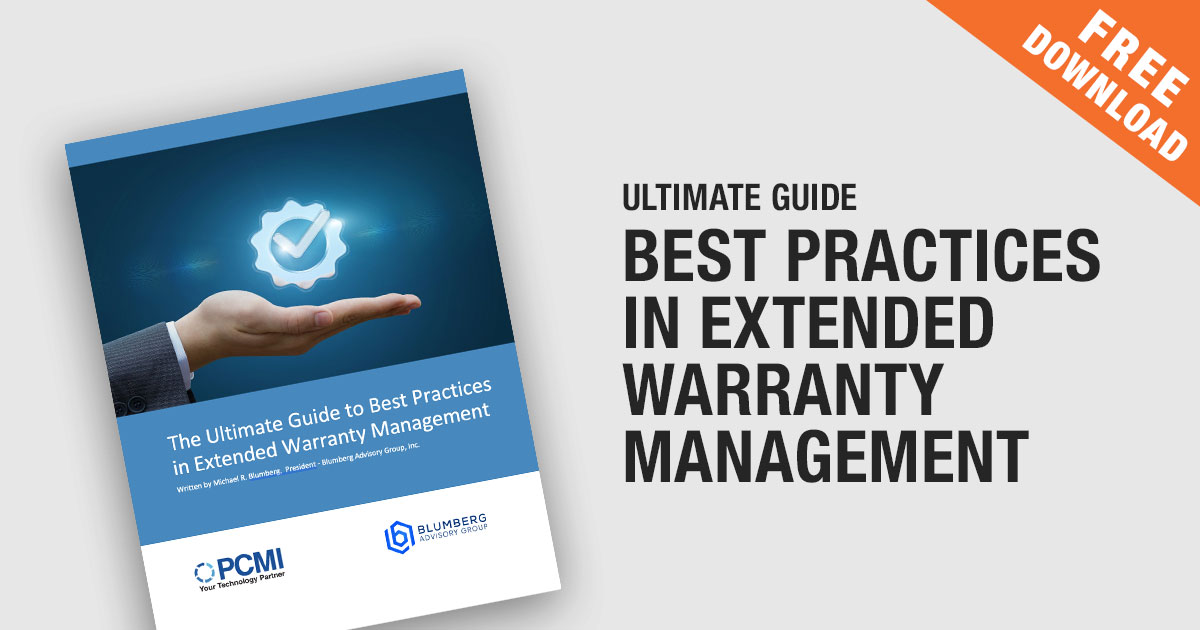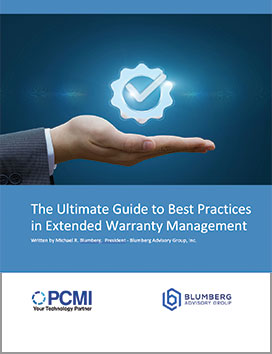
M anaging warranty and claims processes is no easy feat. For OEMs, dealers, third-party administrators, underwriters, and service providers, there are a lot of moving parts when it comes to aftermarket services.
Keep reading to get a better feel for the market and understand what successful professionals in the same space are doing, or download our free, ultimate guide to best practices in extended warranty management below.
Advantages and Benefits of Extended Warranty Management
We all know the benefits of the buyer when it comes to continued service coverage – but what about the individuals involved in selling and administering these services?
Below we will discuss the benefits and advantages of extended warranty management as it pertains to each person a part of the process.
Seller
Sellers receive additional revenue over and above the income realized from the product sale and are provided the opportunity to recognize and book recurring revenue over the life of the extended service contract. Lastly, sellers are able to capture customer data and buying tendency data for marketing purposes.
Service Provider
The benefit to service providers is the opportunity to secure long-term customer relationships, including extending service contract coverages and durations, by delivering exceptional service.
Manufacturer
Manufacturers have the opportunity to gather product performance and product failure data, which allows them to make improvements. In addition, they can analyze product service costs and frequencies as well as build customer brand loyalty.
Best Practices in Extended Warranty Management
There are eight things to keep in mind when considering best practices in extended warranty management – see below for more information on what they are, how to implement them, and what software solution can cover all of these bases.
1
Sell Up Front – Make it Quick and Easy
2
Offer Varying Services and Durations
3
Data Accuracy is Key
4
Claims Processing
5
Automatic Claims Adjudication
6
Key Performance Indicators (KPIs) and Metrics
7
Loss Ratio
8
The Role of Comprehensive Claims Management Software
1. Sell Up Front – Make it Quick and Easy
It’s essential to gather as much information as possible about the buyer and the product bought at this early stage. To capture the required information, point of sale integration with a CRM will be extremely beneficial.
Providing incentives such as discounts on a similar or related product, or even storewide, can help further the point of sale. Make it easy for customers by implementing easy-pay solutions such as Afterpay or Affirm.
2. Offer Varying Services and Durations
Buyer needs vary, which is why it’s important to make offerings attractive to each specific prospect. Offer differing coverage durations such as one year at a specific cost, then the next two years coverage at increasing, but then provide discounted rates for each additional year added to the coverage.
Offering varying terms will also look more appealing to buyers.
3. Data Accuracy is Key
No matter the duration and terms of an extended warranty agreement, it’s absolutely essential to capture as much information as possible about the purchaser and product being purchased. The timeliness and correct processing of future extended warranty claims will likely depend on the correctness of this data.
Not to mention, the accuracy of this data plays a critical role in detecting and preventing fraudulent warranty claims.
4. Claims Processing
Software abilities and software integration capabilities are critical in claims processing due to the fact that warranty and extended warranty customers must file and settle claims as easily and quickly as possible. The most ideal way to initiate a claim is to allow a customer to file a claim via a software portal connected to the claims administrator or processor.
When initiating a claim as soon as it’s received, the claims administrator must determine two things:
- Is the claim legitimate
- The terms of the warranty or extended warranty coverage
Accurate and complete data impact both factors as well as the time it takes to adjudicate a claim. If there’s any incorrect or missing data, the warranty processor will need to research and verify the claim, adding on time.
5. Automatic Claims Adjudication
In some circumstances, it is desirable to automatically settle a claim and authorize a payment, replacement, or repair without further investigation, which can cut down both time and costs. A few of these circumstances include:
- Low dollar claims
- Frequent, repetitive, or common claims
- Claims where the cost to repair is not economically sensible
- Claims where a replacement shipment is standard for the issue reported
Comprehensive claims management software empowers users to define specific business rules to automate this automatic claims settlement process.
6. Key Performance Indicators and Metrics
OEMs, dealers, TPAs, underwriters, and those involved in processing and adjudicating warranty claims should regularly monitor and report on specific metrics and KPIs. Some suggested KPIs include:
- Average claim resolution times
- Percent of claims settled automatically
- Service Level Agreement (SLA) compliance
- Percent of claims received via email, phone, direct mail, portal, etc.
- Claims adjudication costs and loss ratio
7. Loss Ratio
Loss ratio is an essential metric in tracking warranty and extended warranty profitability and viability. Fundamentally, the loss ratio is the cost of settling claims divided by the premiums (revenue) generated for the extended service contract.

High loss ratio – 90%
Appropriate loss ratio – 75-85%
Low loss ratio – 65% or less
When evaluating the loss ratio, two factors to consider are the cost of administering the service contract as well as calculations based on individual time segments in the agreement will almost certainly be misleading.
8. The Role of Comprehensive Claims Management Software
Software is invaluable in helping administrators accurately manage, track, and report on warranty and post-warranty services.
PCMI’s administration software, PCRS can empower them to do just that. PCMI offers a modular package of software solutions to administer F&I products, service contracts, and extended warranties while PCRS supports and automates the entire lifecycle of all aftermarket products.
PCRS software capabilities include:
- Warranty and extended warranty policy administration
- Claims administration
- Service dispatch
- Risk management
- Analytics and reporting
- Rapid integration with enterprise systems and third-party applications
Download Our Free Guide
Interested in learning more? Download your free Ultimate Guide to Best Practices in Extended Warranty Management by filling out the form below!

